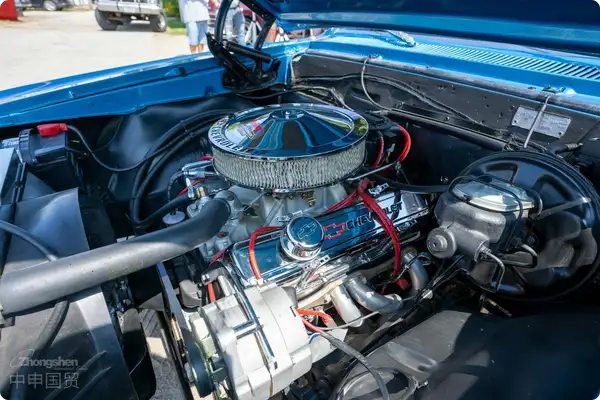- Shanghai Zhongshen International Trade Co., Ltd. - Two decades of trade agency expertise.
- Service Hotline: 139 1787 2118

As a company deeply rooted in the automotive components industry,Import RepresentationWith 20 years of experience as a seasoned service provider in the industry, we fully understand the importance of safety certifications for components like taillight assemblies.Automotive partsImporting involves numerous professional barriers. This article will analyze the core processes and solutions for importing tail lamp assemblies from the perspective of international trade practices, assisting enterprises in achieving efficient and compliant procurement.
Contents
ToggleI. Three Core Challenges in Importing Taillight Assemblies
1.Adaptation to multinational certification systems
The differentiated management requirements for EU E-mark certification (ECE R48/R6), U.S. DOT standards, and China CCC certification (GB 4660/GB 11564). Special attention must be paid to the compatibility of technical parameters such as the luminous flux and light distribution performance of the lamps with the standards of the importing country.
2.Accurate HS Code Classification
It is necessary to accurately distinguish:
- Rear combination lamp assembly (HS 8512.20.00 China Customs Code)
- Individual LED module (HS 8541.40.90)
- Lampshade plastic parts (HS 3926.90.90)
Misclassification may result in a 5%-30% tariff discrepancy and subsequent rectification costs.
3.Intellectual Property Risk Prevention and Control
For parallel imports of aftermarket parts for brands such as BMW and Mercedes-Benz, it is necessary to verify the authorization scope of the EPL (Export Parts List) in advance to mitigate the risk of OEM trademark infringement.
II. Comprehensive Import Agency Service Plan
Phase 1: Preliminary Compliance Planning
- Establish a technical documentation repository: Consolidate test reports such as SAE/JIS/DIN provided by suppliers.
- Pre-declaration system: Conduct pre-classification of goods through the AEO-certified enterprise channel of customs (time reduced by 40%).
- Tariff Optimization Plan: Utilize RCEP Agreement Rates (Zero Tariff for ASEAN Imports) and ITA Agreement (Duty-Free for Certain Electronic Components)
Phase Two:International LogisticsBulk parts:
- Loss prevention packaging design: Adopts honeycomb paperboard + EPE cushioning structure to ensure the lamp surface protection level meets ISTA 3A standard.
- Hazardous Material Avoidance: The transportation of mercury-containing gas discharge lamps must be declared in accordance with UN 3077 standards.
Phase 3: Rapid Customs Clearance at Ports
- Electronic Data Pre-review: Complete the upload of CIQ documents (Type Test Report, Energy Efficiency Certificate) 72 hours in advance.
- On-site Inspection Response: Equipped with a professional customs team to handle specialized inspections such as lighting tests (GB 25991).
Phase 4: Supply Chain Value-Added Services
- VMI Inventory Management: Establish a bonded warehouse stock model to achieve a 72-hour emergency replenishment response.
- Reverse logistics channel: Handling defective product returns (applying for customs special supervision zone ledger)
III. Strategies for Addressing Common Industry Issues
| Risk Scenarios | Solutions | Time - limit guarantee |
|---|---|---|
| The lamp housing cracked during transportation. | Please insure against All Risks with additional coverage for Breakage (premium rate 0.15%). | Claim settlement cycle ≤15 working days |
Technical Certification Compliance
1.Industry case database: Focus on verifying whether there is an import record for models of the same brand (e.g., experience in importing Volkswagen MQB platform lighting components).
2.Technical compliance team: At least 3 quality engineers with IATF 16949 internal auditor qualifications must be assigned.
3.Digital System: Capability of direct API connection between ERP and the Customs Single Window is required.
4.Emergency response mechanism: Commit to activating the three-level contingency plan (joint handling by customs/legal/technical teams) within 2 hours in case of port anomalies.
Conclusion
Against the backdrop of the profound restructuring of the global automotive industry chain, the import of taillight assemblies has evolved from a simple trade activity into a systematic project involving technical regulations, supply chain resilience, and compliance risk control. As a TAPA-certified import service provider, we recommend that enterprises focus on three key value dimensions: the supplier's global certification capabilities, the digitalized customs clearance proficiency of the agent service provider, and the completeness of contingency plans.
Related Recommendations
? 2025. All Rights Reserved. Shanghai ICP No. 2023007705-2  PSB Record: Shanghai No.31011502009912
PSB Record: Shanghai No.31011502009912









